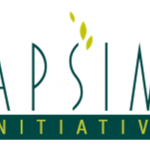APSIM
Dean P. Holzworth (CSIRO Agriculture Flagship)
Overview
| Model category | CSM, gbCSM |
|---|---|
| Plant part | Shoot |
| Scale | Field |
| Licence | open_source |
| Operating system | Windows, Linux |
| Programming language | Fortran, Cpp |
| Format of model inputs and outputs | NA |
| Species studied | Barley, Rapeseed, Chickpea, Cowpea, Fababean, Lablab, Lupin, Maize, Millet, Mucuna, Mungbean, Oil-palm, Groundnut, Pea, Rice, Sorghum, Soybean, Sugar-beet, Wheat, Cotton, Sugarcane |
| Execution environment | Console, Stand-alone application |
| Modelling environment | APSIM |
Scientific article
APSIM - Evolution towards a new generation of agricultural systems simulationDean P. Holzworth,Neil I. Huth,Peter G. deVoil,Eric J. Zurcher,Neville I. Herrmann,Greg McLean,Karine Chenu,Erik J. van Oosterom,Val Snow,Chris Murphy,Andrew D. Moore,Hamish Brown,Jeremy P.M. Whish,Shaun Verrall,Justin Fainges,Lindsay W. Bell,Allan S. Peake,Perry L. Poulton,Zvi Hochman,Peter J. Thorburn,Donald S. Gaydon,Neal P. Dalgliesh,Daniel Rodriguez,Howard Cox,Scott Chapman,Alastair Doherty,Edmar Teixeira,Joanna Sharp,Rogerio Cichota,Iris Vogeler,Frank Y. Li,Enli Wang,Graeme L. Hammer,Michael J. Robertson,John P. Dimes,Anthony M. Whitbread,James Hunt,Harm van Rees,Tim McClelland,Peter S. Carberry,John N.G. Hargreaves,Neil MacLeod,Cam McDonald,Justin Harsdorf,Sara Wedgwood,Brian A. KeatingEnvironmental Modelling & Software, 2014 View paper
Model description
The Agricultural Production Systems sIMulator (APSIM) was developed to simulate biophysical processes in agricultural systems, particularly as it relates to the economic and ecological outcomes of management practices in the face of climate risk. It is also being used to explore options and solutions for the food security, climate change adaptation and mitigation and carbon trading problem domains. From its inception twenty years ago, APSIM has evolved into a framework containing many of the key models required to explore changes in agricultural landscapes with capability ranging from simulation of gene expression through to multi-field farms and beyond. APSIM is structured around plant, soil and management modules. These modules include a diverse range of crops, pastures and trees, soil processes including water balance, N and P transformations, soil pH, erosion and a full range of management controls. APSIM resulted from a need for tools that provided accurate predictions of crop production in relation to climate, genotype, soil and management factor while addressing the long-term resource management issues.
Some case studies
Some recent studies using APSIM can be found here: http://www.apsim.info/Products/Publications.aspx
